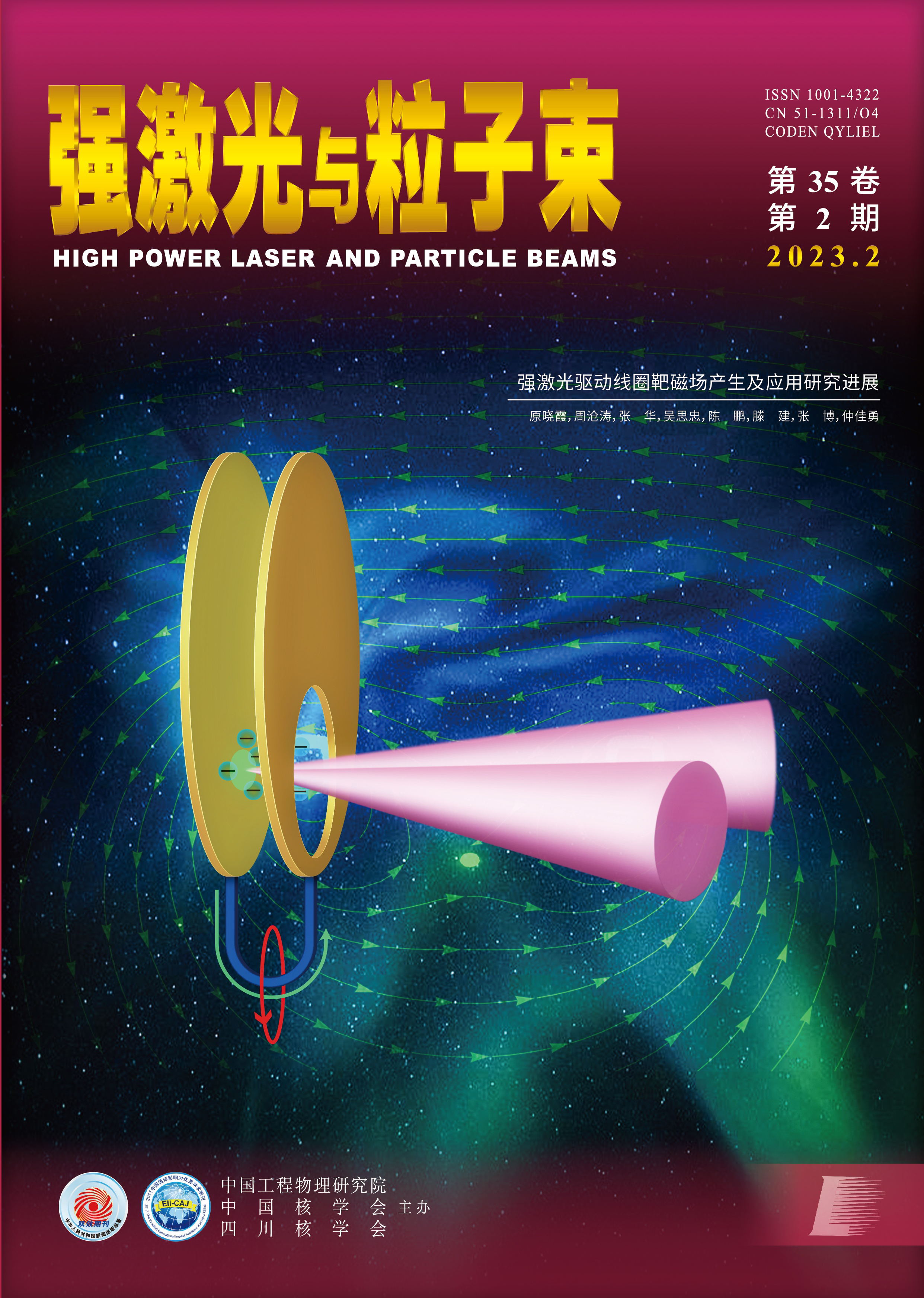2023 Vol. 35, No. 2
Thanks to the advantages of compact, inexpensive and high conversion efficiency, high power fiber lasers are highly desired in industry applications. Recently, an all-fiber high power fiber amplifier directly pumped by laser diodes (LDs) was experime...
It has been experimentally proved that the intense laser-driven capacitor-coil target can generate a strong magnetic field of several hundred Tesla. The basic model of the magnetic field generated by this experimental method and its development proce...
To study the thermal effect and secondary thermal radiation of infrared detection system after laser irradiation on the detector imaging, this paper uses Ansys software for thermal radiation simulation and finite element structure simulation of infra...
Laser accelerators can provide proton beams with unique qualities, such as micron size, picosecond pulse duration and high peak current, and have been demonstrated for various applications and for scientific research purposes. The effect of the space...
Magnetized Liner Inertial Fusion (MagLIF) is one of the possible configurations to reach ignition. For future ignition validation, it is necessary to explore key issues of MagLIF and seek an optimal design of integrated MaglIF experiments on the low ...
The progress of the 105/140 GHz MW gyrotron experiment aiming for fusion application is presented. The gyrotron employs dual-frequency design in triode magnetron injection gun, cavity, quasi-optical mode converter and window. In the experiment, pulse...
Positioning system is the electromagnetic sensitive part in the core unit of unmanned aerial vehicle (UAV) and the key part of UAV electromagnetic protection. To analyze the failure process and mechanism of electromagnetic interference, aiming at the...
At present, efficient time domain numerical methods used for the coupling effect analysis of electromagnetic pulse to long rails on infinite ground are still rare. An efficient time domain hybrid algorithm, consisting of the finite difference time do...
High-intensity electromagnetic pulse can easily couple into the electronic system through antenna, cavity and cable, causing transient failure or permanent damage of the sensitive electronic equipment. Installing electromagnetic pulse protection circ...
For field-to-line coupling problems, the classical transmission line theory is not applicable to obtain voltage/current responses on transmission lines irradiated by high-frequency electromagnetic disturbances. To solve this problem, a time-domain fu...
Wideband high power microwave is one of the main development directions of high power microwave in recent years. A wideband high power microwave system with small volume, working in UHF band is developed. The system powered by a 24V battery uses a Ma...
This paper presents a compact filtering patch antenna with independent controllable radiation nulls. The antenna is principally composed of a simple radiation patch antenna and two split-shaped slots. Taking the basic microstrip patch antenna as the ...
High power traveling wave tubes (TWTs) usually use compound pipe shells to enhance the integration and heat dissipation characteristics of high frequency system. When broadband TWT adopts the compound pipe shell high frequency manufacturing process, ...
The deviation of the beam orbit can be quickly corrected by the fast corrector power supply, which improves the reliability of the operation of the synchrotron radiation light source. With the further improvement of the quality of the fourth-generati...
The structure design and simulation research for the water-cooled solenoid with magnetic field on the order of T are presented in this paper. The multi-layer water-cooled structure design is used for the solenoid. The solenoid structure malformation ...
The high intensity proton accelerator of China Spallation Neutron Source adopts the method of charge exchange injection. A carbon foil strips two electrons of H− into H+, and proton beams are multiturn-painted in the phase space of the rapid cycling ...
Chinese First Quasi-Axisymmetric Stellarator (CFQS) is being constructed as an international joint project between the National Institute for Fusion Science in Japan and Southwest Jiaotong University in China. To meet the requirements of 0.1 T steady...
The output waveform of capacitive voltage divider has top tilt when measuring square-wave signal with pulse width of several microsecond. To solve this problem, an improved two-end matched capacitive divider is designed. The capacitive divider with t...
The Z-pinch experiments with a reflux hood structure, exp90 or exp60, were carried out in an intense pulsed power device FP-2 and simulated and analyzed by the two-dimensional magnetically driven simulation code (MDSC2). The numerical simulations sho...
When the charger based on the high-frequency switching charging technology is used to charge the pulse power supply, due to the existence of distributed inductance in the charging circuit, during the high-frequency current charging process, overvolta...
In order to meet the need of magnitude transmission of high voltage pulse amplitude, this paper develops the design of high voltage pulse amplitude calibration device with pulse amplitude of 1-20 kV and pulse width of 1-100 μs. The calibration device...
The principle of triple transmission line type pulse compression device is analyzed, and a built-in high resistance spiral with three parallel winding wires is designed to improve power gain and minimize the device. The circuit simulation model and t...
In the study of the transportation of low energy electrons through insulating capillaries, the experimental results are very different and depending on many conditions. This leads to some controversies on whether the mechanisms of the electron guidin...
The key parameters of the neutral beam, such as beam uniformity and beam divergence angle, can be obtained by analyzing the infrared images generated by the beam bombarding the target surface. Due to the camera setup angle, the IR images show geometr...
To explore the influencing factors of the pulsed electric field on the prevention and control of aquatic organism fouling, and to determine the minimum electric field conditions required for effective prevention and control of fouling organisms, we b...




 Email alert
Email alert RSS
RSS

